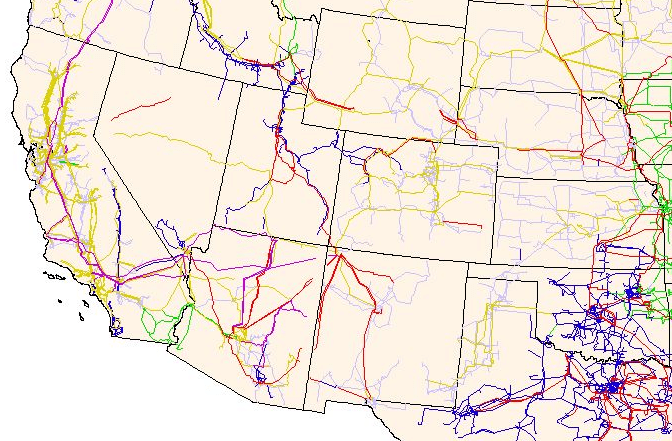Why DG World Needs The Grid More Than Ever
Wednesday, Nov 13 2013

The rapid growth of rooftop solar has fueled an important debate about the future of our electric power system. And for good reason. Affordable, onsite solar power—aka distributed generation (DG)—offers electric customers something they’ve never had before: choice of where their power comes from and control over costs. The implications for the electric power system are profound and transformational as they point to a more decentralized future.
Indeed, DG has been called a disruptive threat by the Edison Electric Institute (EEI), the primary trade association for electric utilities. And there is growing recognition amongst regulators and industry pundits that decentralization and decarbonization of the power sector are the two big trends that may require major changes to utility business models and regulation.
In imagining a more decentralized power system, some DG proponents have gone so far as to predict we will eventually have no need for the electric grid, utilities, or central generation. I think a closer look reveals that the opposite is more likely true. A future with large amounts of DG will actually depend on a robust, resilient, and flexible grid (and utilities) to ensure the reliability of the whole system.
While many solar customers think of themselves as liberated from the gird, the reality is that they remain tethered to it. Most rooftop solar systems don’t provide backup power. So solar DG customers still need grid power for times when the sun isn’t shining. Additionally, most rooftop solar systems use the grid to bank excess power during the day via net-metering, which allows them to apply excess daytime power to offset the power they import from the grid at other times. They’re effectively using the grid as a very efficient battery.
So what about actual batteries? The ability to store electricity onsite would obviate the need for utility power and allow DG customers to truly be free of the grid. The conventional wisdom is that the best of today’s battery technologies are about 3-times the cost they need to be to make them cost effective for onsite power storage. I’m a big believer that innovation and scale will drive battery costs down. So it seems quite possible that at some point batteries will be cheap enough for some DG customers to ‘cut the cord’ to the utility.
Here’s the challenge to the all-DG scenario. The fact that some customers will be able to cut the cord doesn’t mean they all will. Think of all the apartment buildings, urban homes, hospitals, office buildings, high rises, and factories that don’t have enough onsite space to host a solar system. Even in a situation where cost-effective storage exists, it’s likely that somewhere around 70%-80% of electric customers who will still depend on the grid for reliable power. That means the grid, central generation, and utilities are here for the long run.
This is where the future-think gets interesting. Many of those remaining utility customers will still choose to meet some of their power needs with solar. And many will also choose to use onsite storage to offset their demand charges. Some may have onsite electric-vehicles that can provide backup power to their building when they’re plugged in.
No matter how you slice it, the vast majority of them are going to need utility service to get through some part of the day (or night). The key is that the types of services and features they’ll need are very different from those provided by the grid we have today. They’ll need a grid that can handle large amounts of variable generation—and a regulatory framework that works for those who use DG and those who don’t.
Here’s why this is important. Understanding what type of future is likely to unfold in electric power is the key to making smart policy and investment choices today. While DG is clearly going to play a transformative role in that future, it’s also clear that the grid has a central role to play.
Rather than wasting time on a debate about DG vs. the grid, we need to be having a conversation about how the system as a whole will work with lots of solar DG and central-scale renewables. That means recognizing the need for continued investment in the grid and central generation. How do we make the grid more robust, resilient, and flexible to facilitate the integration of large amounts of variable generation? And how do we work constructively to define the regulatory and business models to ensure our utilities are healthy and effective in making the system work for all of us?
Arno Harris, Recurrent Energy CEO and SEIA Board Chair